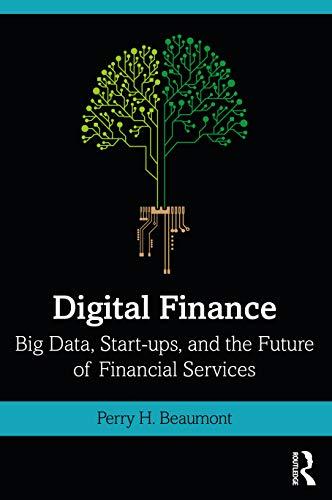
The term structure of interest rates is the relationship between the yields on bonds of different maturities. Figure 2 below shows the 3 months, 6 months, 1 year, 3 year, 5 year and 10 year yields. 10 8 6 4 2 0 86 88 90 92 94 96 98 00 02 04 06 08 10 12 USTB 10Y USTB3Y USTB1Y USTB5Y USTB3M USTB6M Figure 2. USTBs for different maturities. a. Do you think the variables presented in Figure 2 are I(1) series? Explain your answer. [2 marks] b. Which test can be used to verify the expectations theory of the term structure. Explain how you could implement this test for the expectations theory using the 6 interest rates for US Treasury bonds of different maturities. [5 marks] You estimated the Error Correction Model for the 6 interest rates. What do disturbances from this model capture? c. d. The long-run parameter estimates of the VECM, B, has the following form: 1.000000 0.000000 0.000000 0.000000 0.000000 0.000000 1.000000 0.000000 0.000000 0.000000 0.000000 0.000000 1.000000 0.000000 0.000000 B = 0.000000 0.000000 0.000000 1.000000 0.000000 0.000000 0.000000 0.000000 0.000000 1.000000 -0.984151 (0.15466) [-6.36344] -1.032363 (0.01984) [-52.0387] -0.978260 (0.00836) (-117.004] - 1.104874 (0.08520) [-12.9675) -1.075952 (0.12167) (-8.84352] Interpret the parameters and explain how these estimates are related to the expectations theory. [4 marks] Do you agree that a VECM allows to capture the short-run dynamics between the interest rates? Explain your answer. [4 marks] e. f. If a VECM with the different interest rates would have a zero rank, what model should we use? The term structure of interest rates is the relationship between the yields on bonds of different maturities. Figure 2 below shows the 3 months, 6 months, 1 year, 3 year, 5 year and 10 year yields. 10 8 6 4 2 0 86 88 90 92 94 96 98 00 02 04 06 08 10 12 USTB 10Y USTB3Y USTB1Y USTB5Y USTB3M USTB6M Figure 2. USTBs for different maturities. a. Do you think the variables presented in Figure 2 are I(1) series? Explain your answer. [2 marks] b. Which test can be used to verify the expectations theory of the term structure. Explain how you could implement this test for the expectations theory using the 6 interest rates for US Treasury bonds of different maturities. [5 marks] You estimated the Error Correction Model for the 6 interest rates. What do disturbances from this model capture? c. d. The long-run parameter estimates of the VECM, B, has the following form: 1.000000 0.000000 0.000000 0.000000 0.000000 0.000000 1.000000 0.000000 0.000000 0.000000 0.000000 0.000000 1.000000 0.000000 0.000000 B = 0.000000 0.000000 0.000000 1.000000 0.000000 0.000000 0.000000 0.000000 0.000000 1.000000 -0.984151 (0.15466) [-6.36344] -1.032363 (0.01984) [-52.0387] -0.978260 (0.00836) (-117.004] - 1.104874 (0.08520) [-12.9675) -1.075952 (0.12167) (-8.84352] Interpret the parameters and explain how these estimates are related to the expectations theory. [4 marks] Do you agree that a VECM allows to capture the short-run dynamics between the interest rates? Explain your answer. [4 marks] e. f. If a VECM with the different interest rates would have a zero rank, what model should we use







